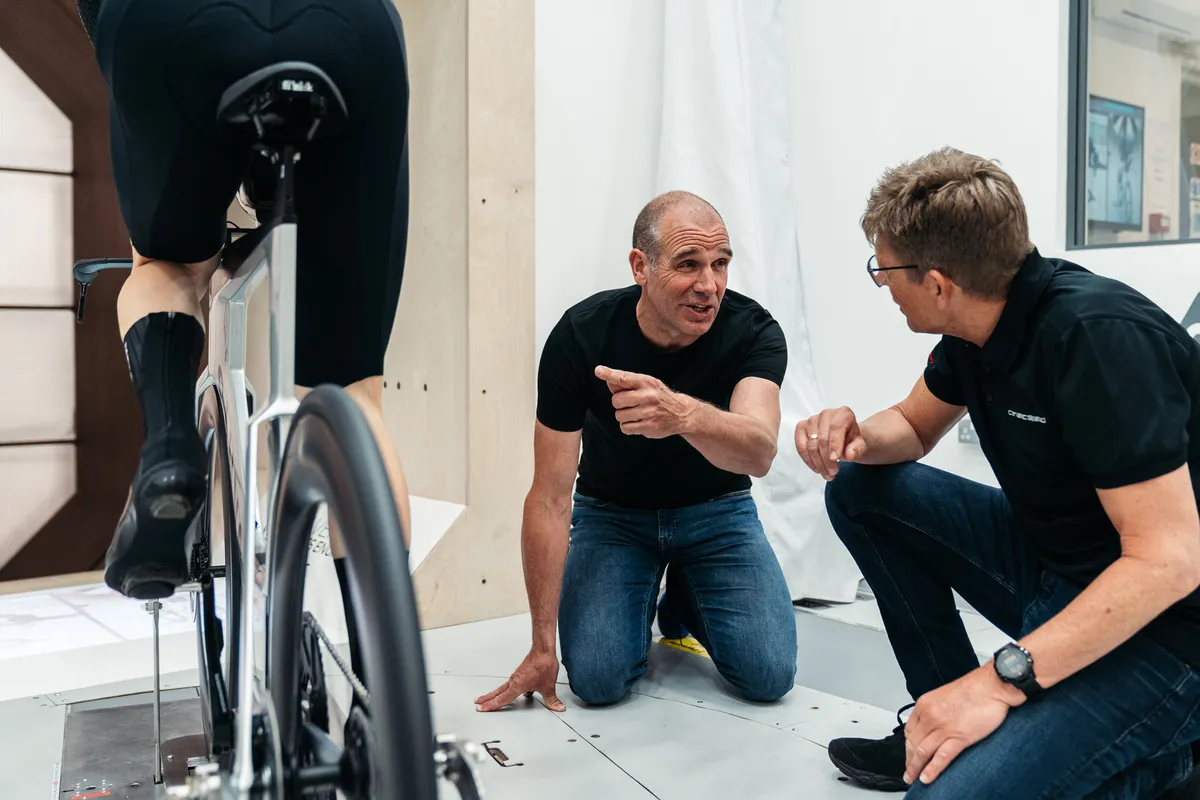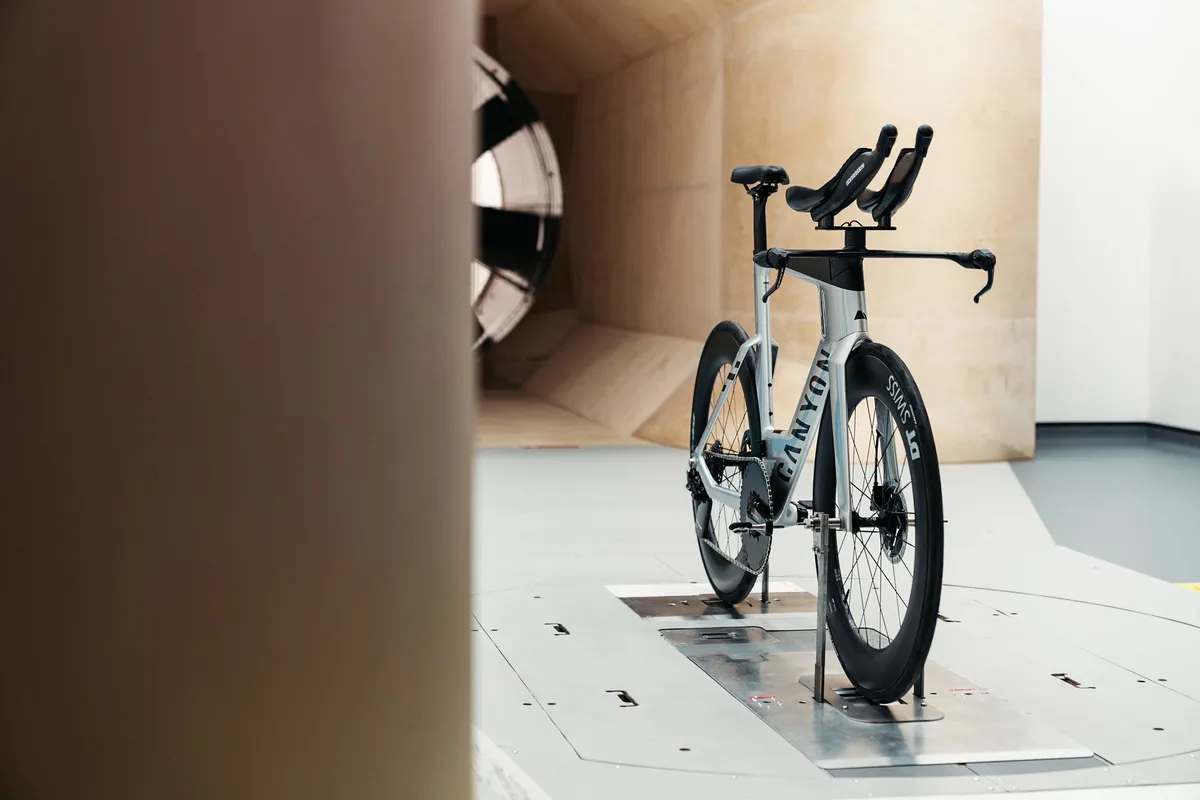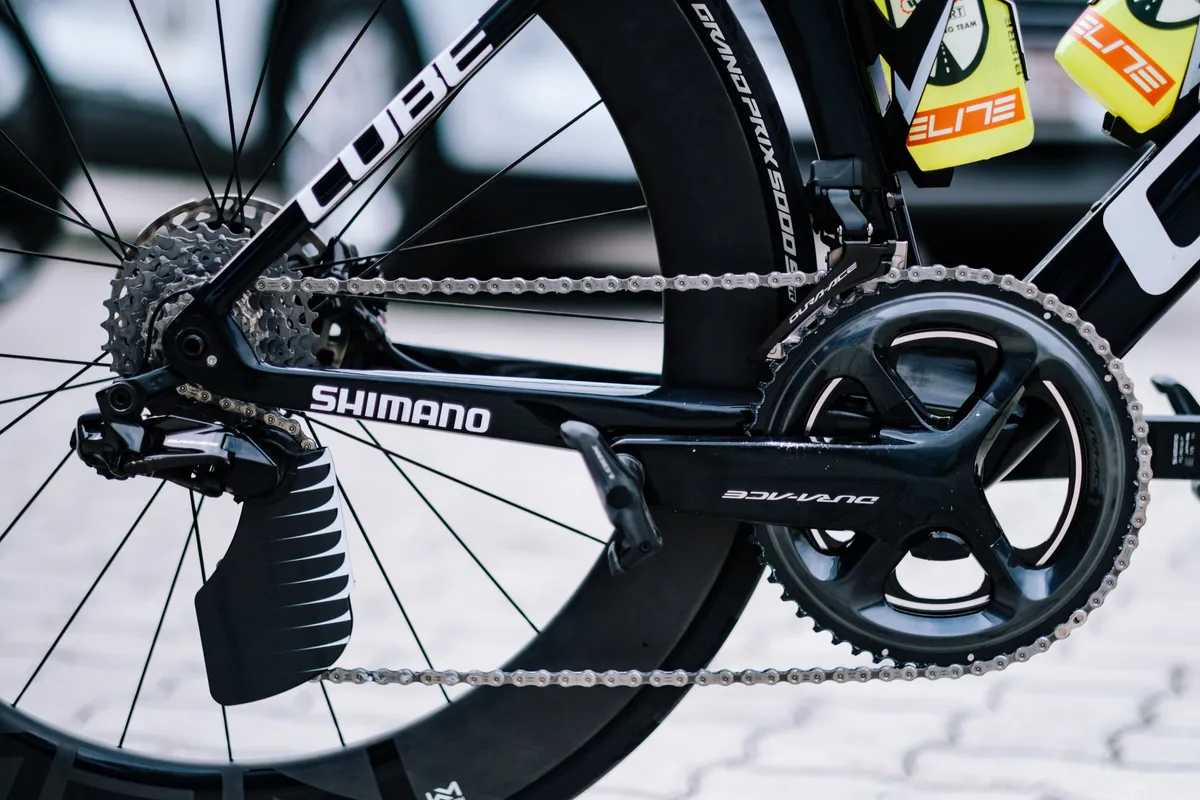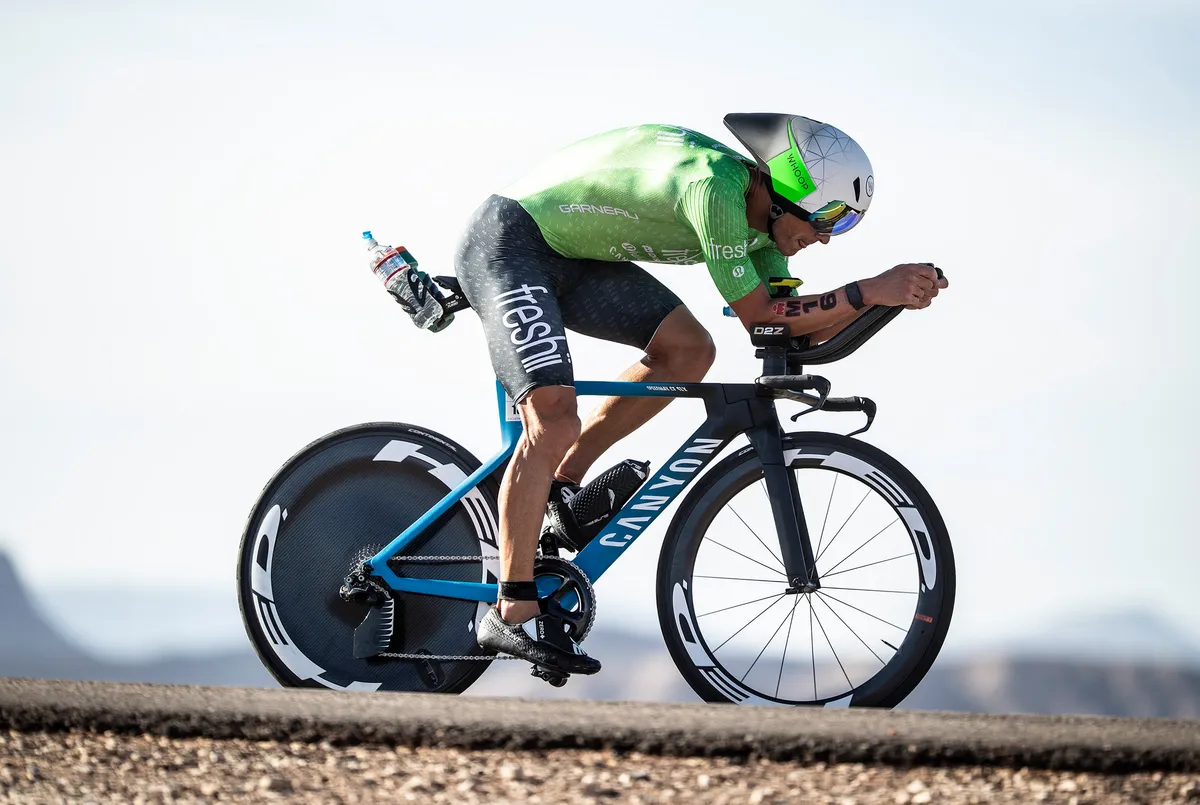CeramicSpeed has officially launched the OSPW Aero, an aerodynamically optimised derailleur cage that features the brand’s signature oversized pulley wheel system.
First spotted at the 2022 Giro d’Italia (original story below), CeramicSpeed says the OSPW Aero was developed in collaboration with Simon Smart, “one of the world's leading aerodynamicists”.
Priced at €739, a rear derailleur equipped with a CeramicSpeed OSPW Aero is claimed to reduce “drag by 40 per cent on average and at some points up to 60 per cent compared to a stock derailleur”.
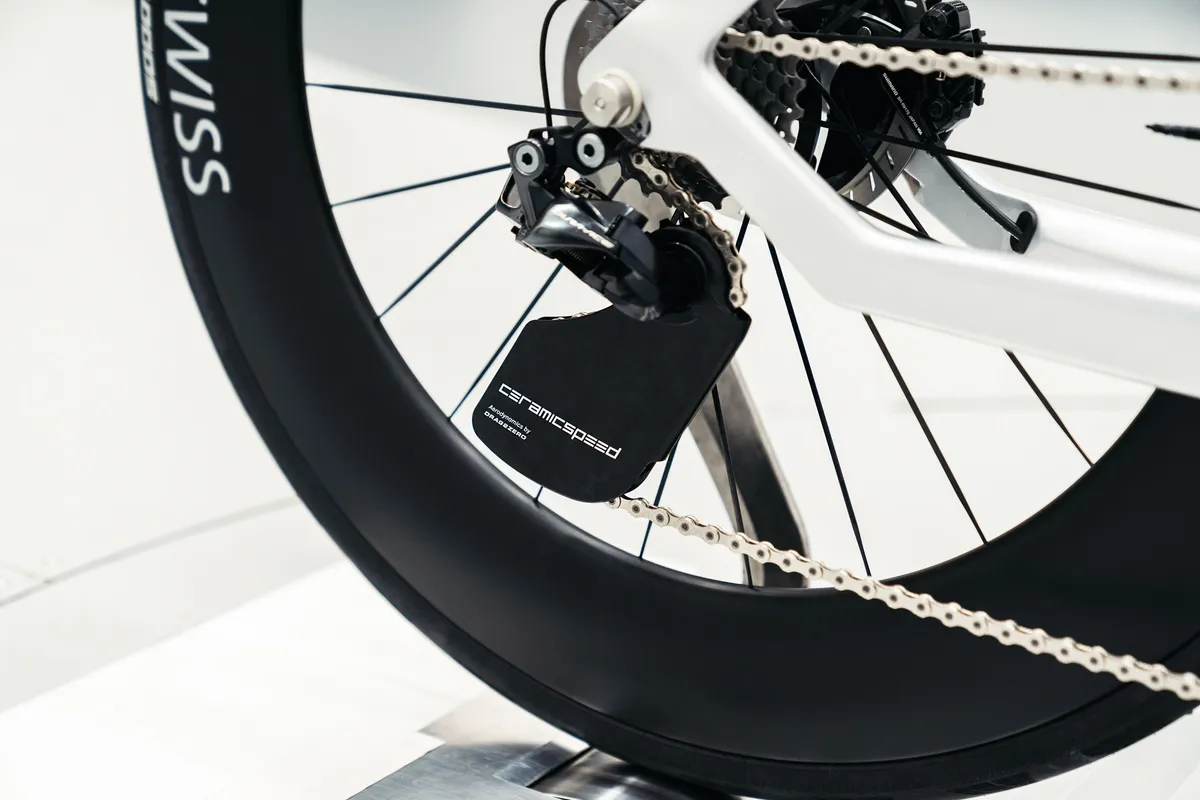
According to CeramicSpeed, this reduction in aerodynamic drag will save a professional cyclist "2.5 seconds during a 25km time trial ridden at 50kph”.
Alternatively, “a competitive age-group triathlete riding at 30kph will save one minute and 15 seconds over a full-distance Ironman”.
These aerodynamic gains come on top of savings from the improved efficiency of the system’s oversized pulley wheels and ceramic bearings, which are claimed to be around 2 to 4 watts.
According to CeramicSpeed, the OSPW Aero adheres to the rules of the Union Cycliste Internationale (the sport’s governing body) because the carbon shroud is structural, and not simply a fairing.
The brand says it tested the OSPW Aero in multiple time trial and aero road bikes, as well as with a full-carbon rear disc wheel and a rear wheel with a 60mm-deep rim, and found “the relative differences between pulley cages were the same”.
Because of this, CeramicSpeed says “We can assume that within the realms of repeatability of the testing that the data is valid for any bike type.”
The CeramicSpeed OSPW Aero is available now in three versions, to fit Shimano Dura-Ace Di2 R9200 or Ultegra R8100, Shimano Dura-Ace R9100 or Ultegra R8000, and SRAM Red eTap AXS or Force eTap AXS derailleurs.
The original story continues below...
An unreleased oversized CeramicSpeed pulley wheel system that sits inside an aerodynamic carbon shroud will reportedly debut at the stage two time trial of this year’s Giro d’Italia.
The new pulley system is said to have been developed in collaboration with Drag2Zero, an aerodynamic consultancy company founded by Simon Smart, and will cost $800, according to Triathlete.
Astana-Qazaqstan will race on prototype Wilier Turbine SLR time trial bikes fitted with the system at the Giro. The system will also be raced by, among others, Patrik Nilsson at the Ironman World Championships on his prototype BMC Speedmachine.
The system bears more than a passing resemblance to a boat’s rudder, with a narrow leading edge flowing into a smooth shroud that covers the whole pulley system.
Oversized pulley wheel systems have become commonplace on WorldTour bikes – especially on time trial bikes – but this is the first time we’ve seen an aero shroud in some years.

Similar shrouded pulley systems are already offered by a number of smaller brands including RalTech, SLF Motion and, previously, Berner. The latter (pictured above) was used by Fabian Cancellara and Lance Armstrong in the 2010 edition of the Tour de France.
While we are yet to receive full details on the system (hence only having the image at the top of this article), we expect the shroud houses a fairly standard CeramicSpeed OSPW pulley system.
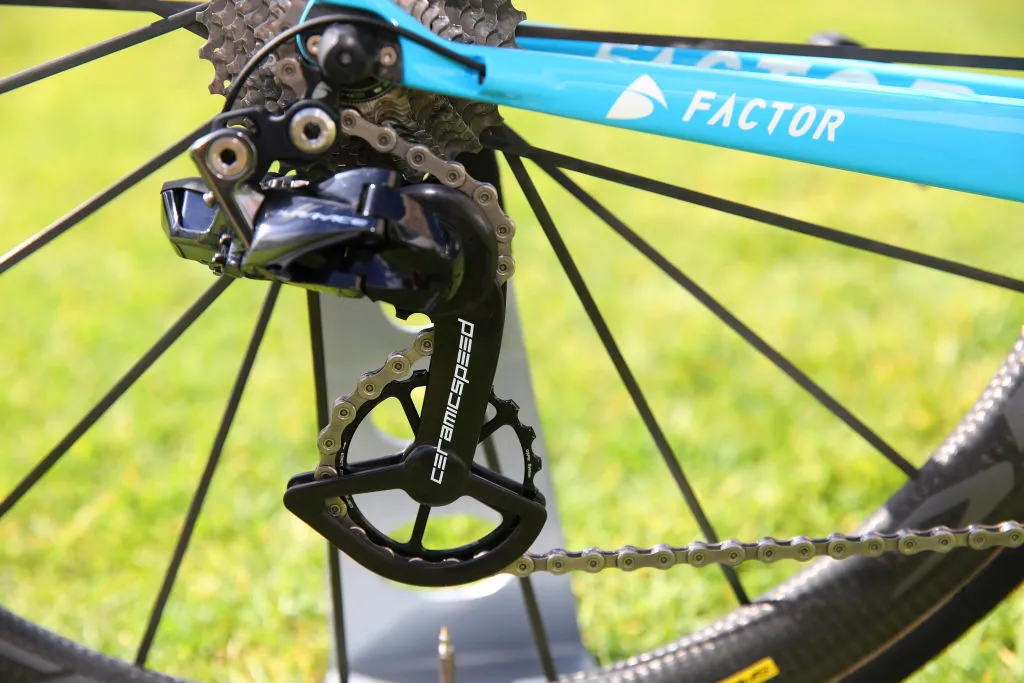
The OSPW system is claimed to save between 2- to 4-watts in drivetrain losses compared to a stock Shimano Dura-Ace rear derailleur cage, according to CeramicSpeed.
The aerodynamic savings offered by the shroud are likely to be similarly modest but, with time trials having proved decisive in several recent Grand Tours, and the growing importance of aero tech gains at the highest level, few teams will turn down the opportunity for free(ish) speed.
